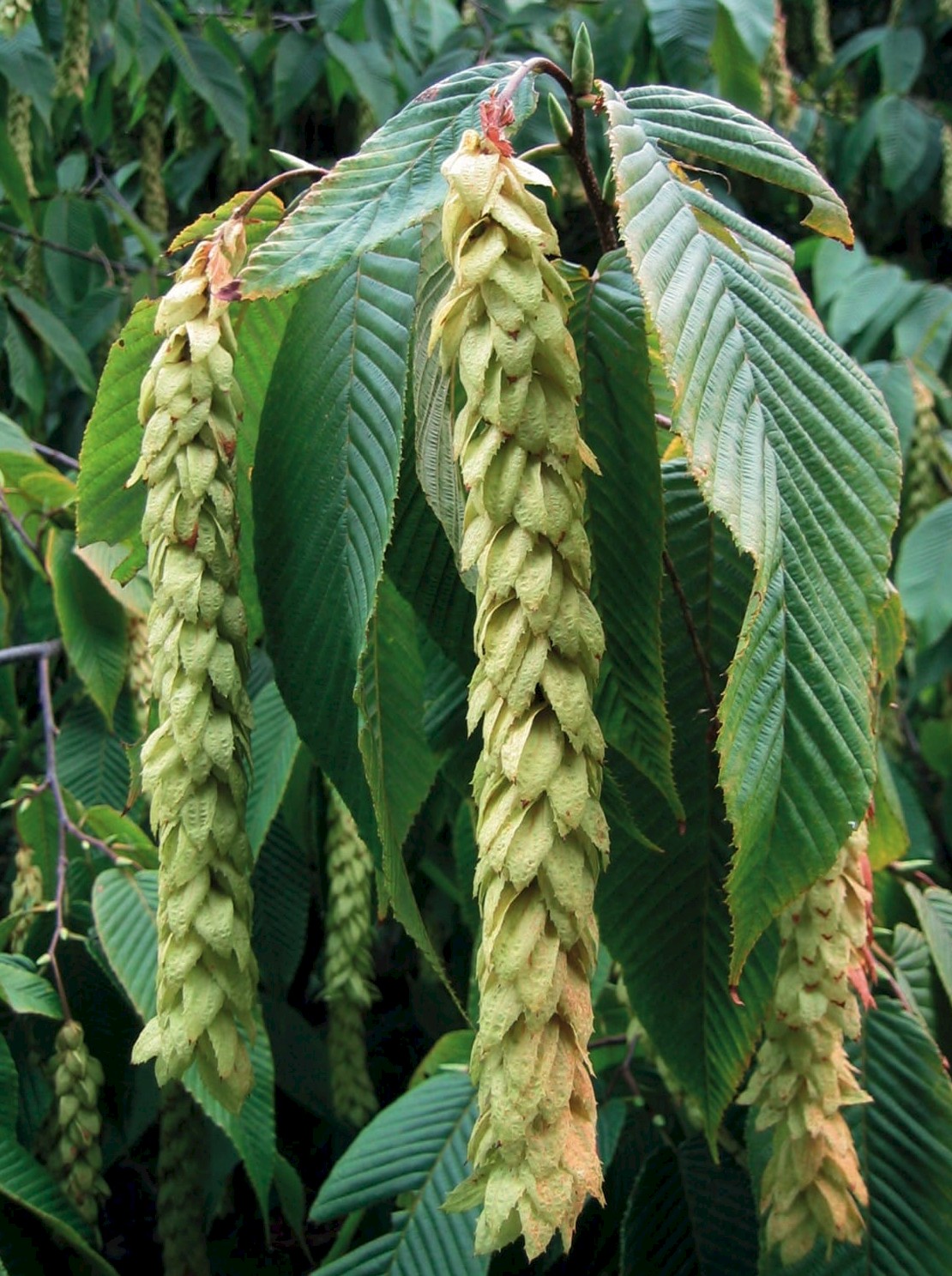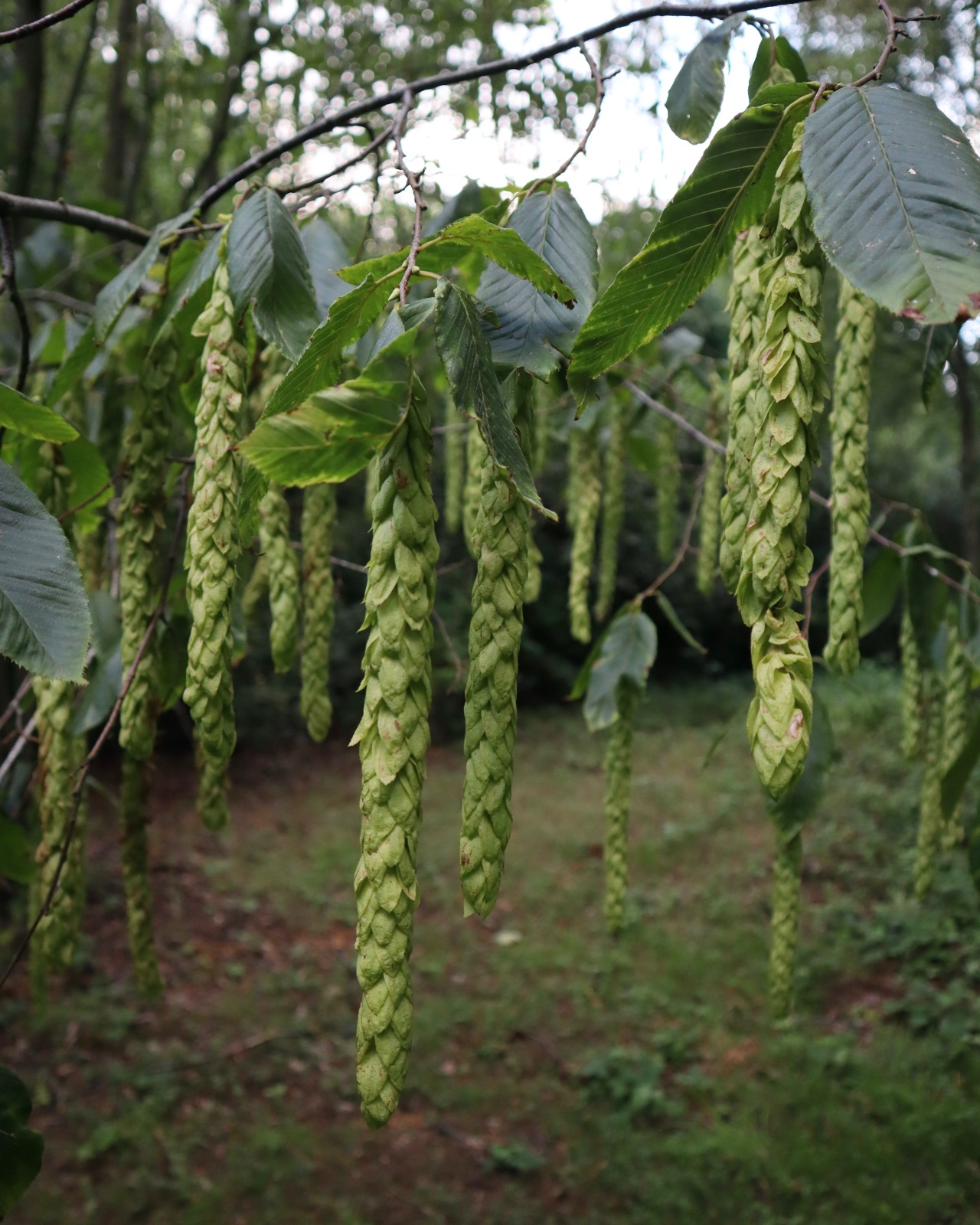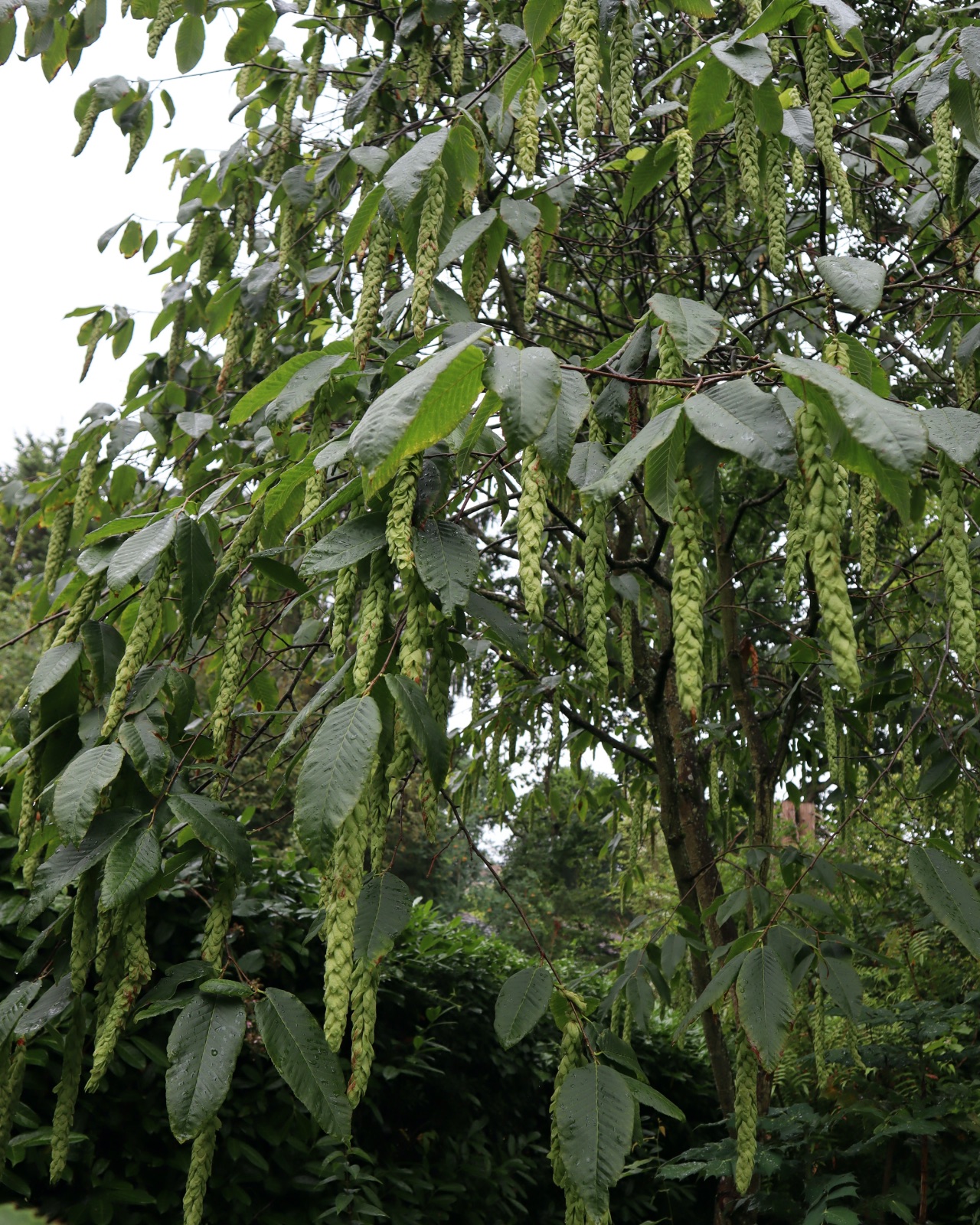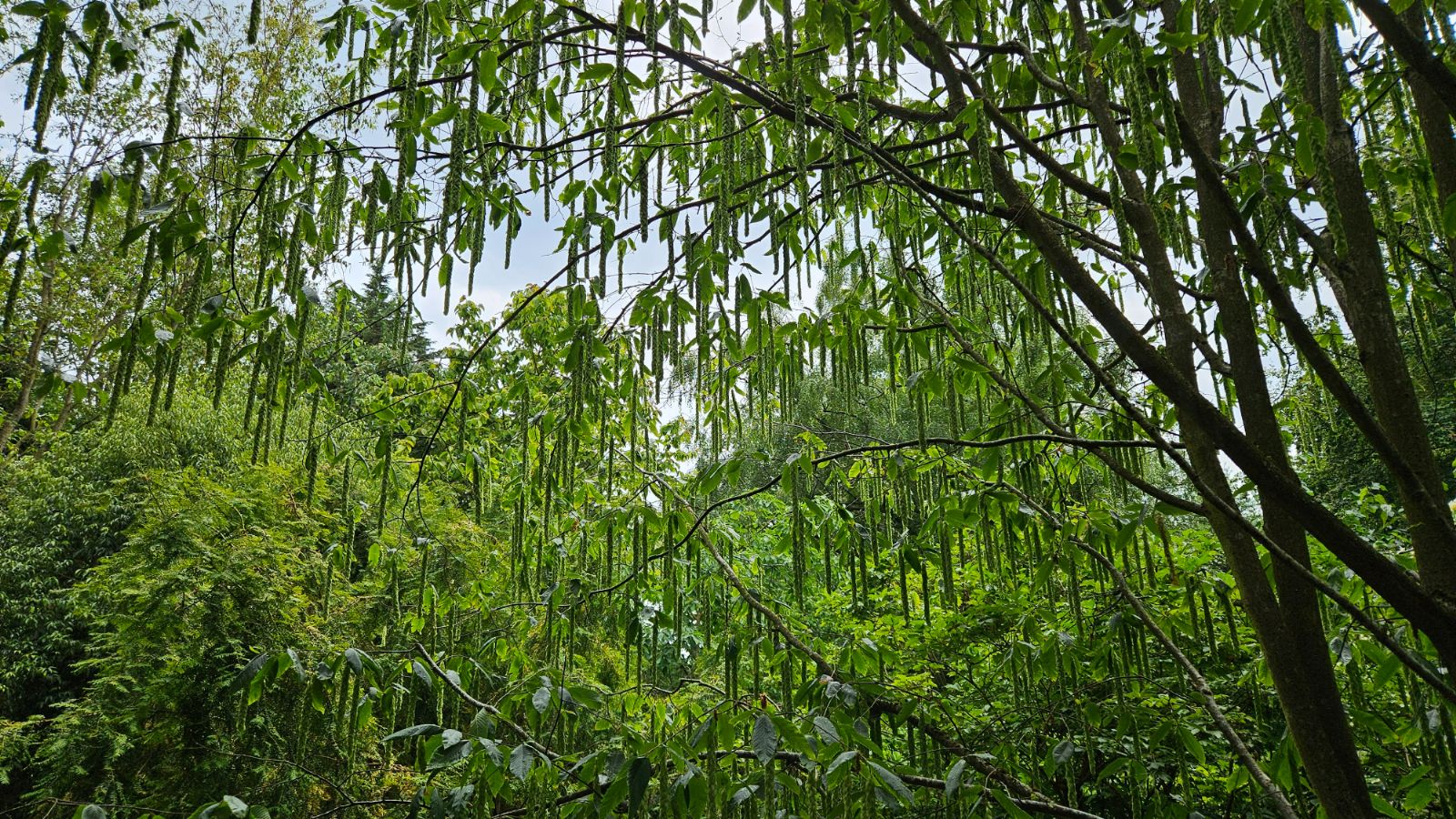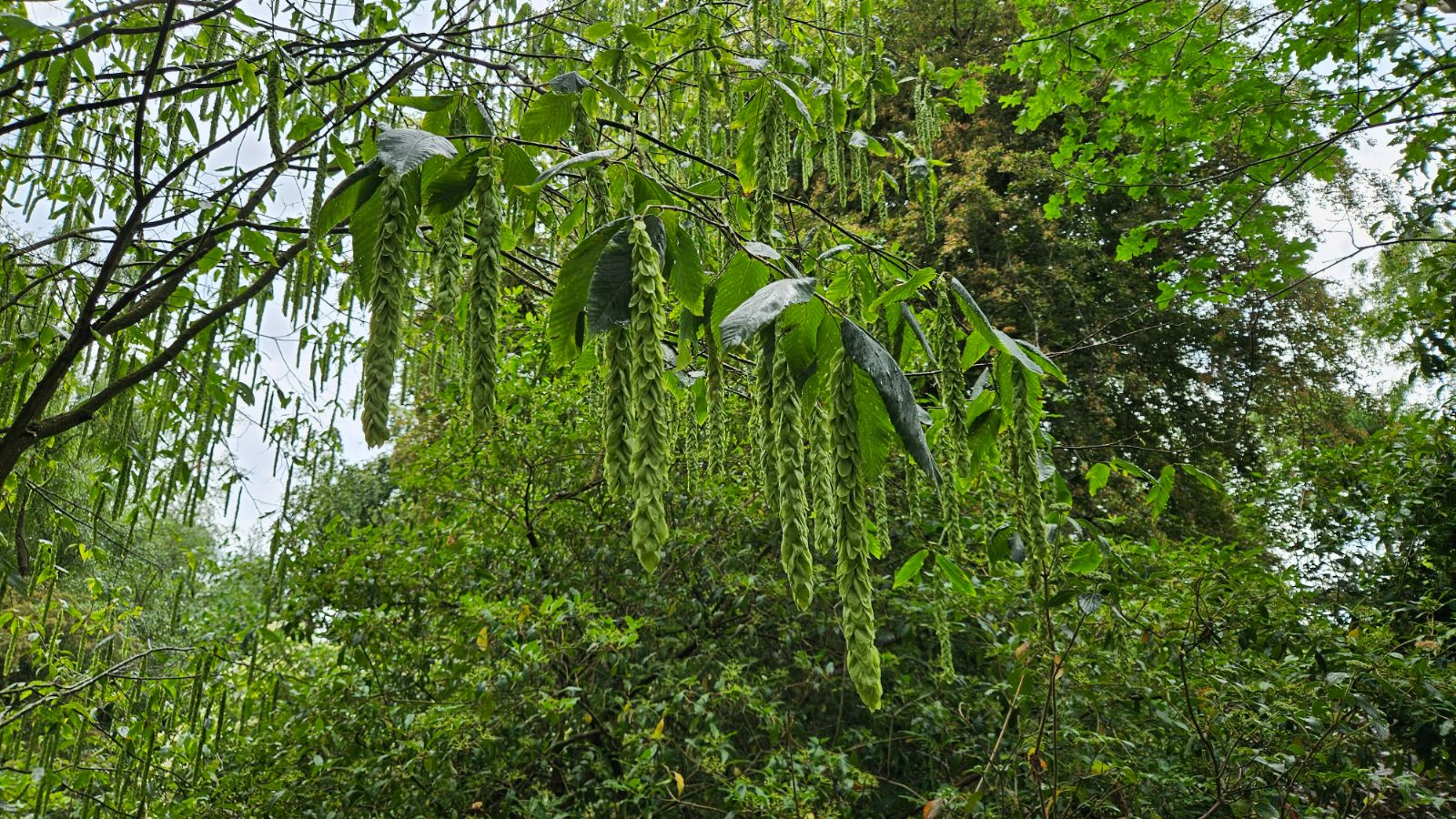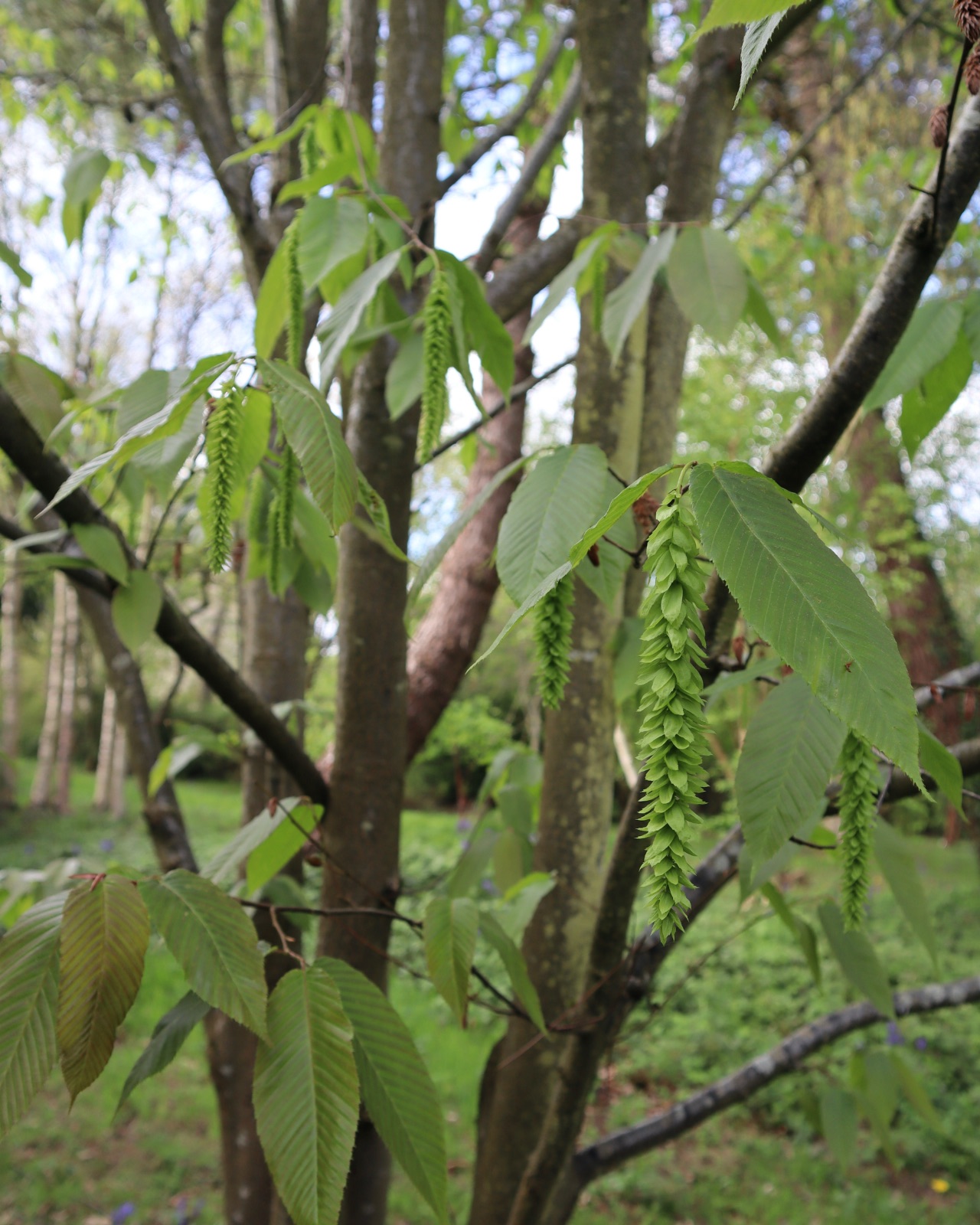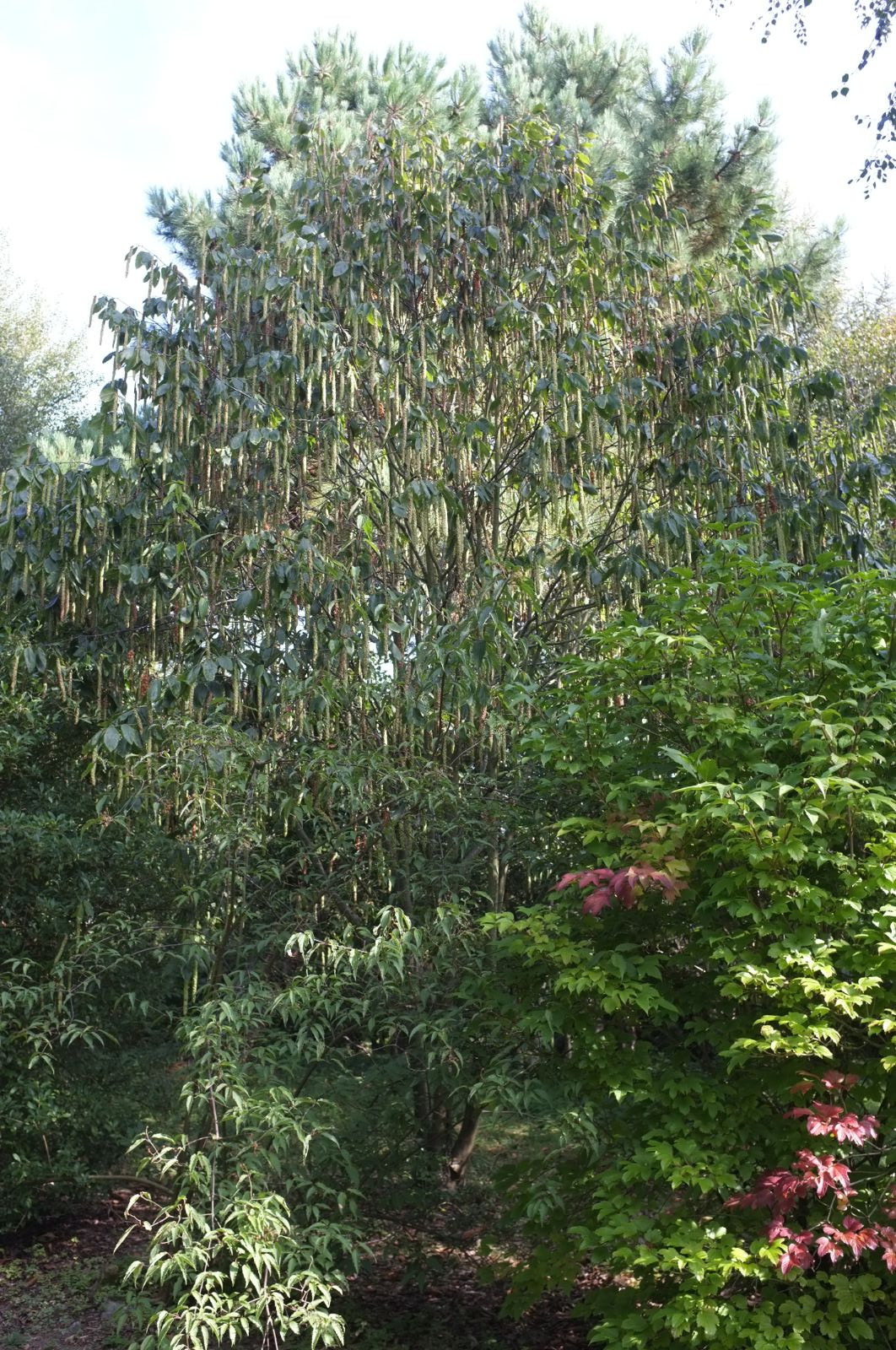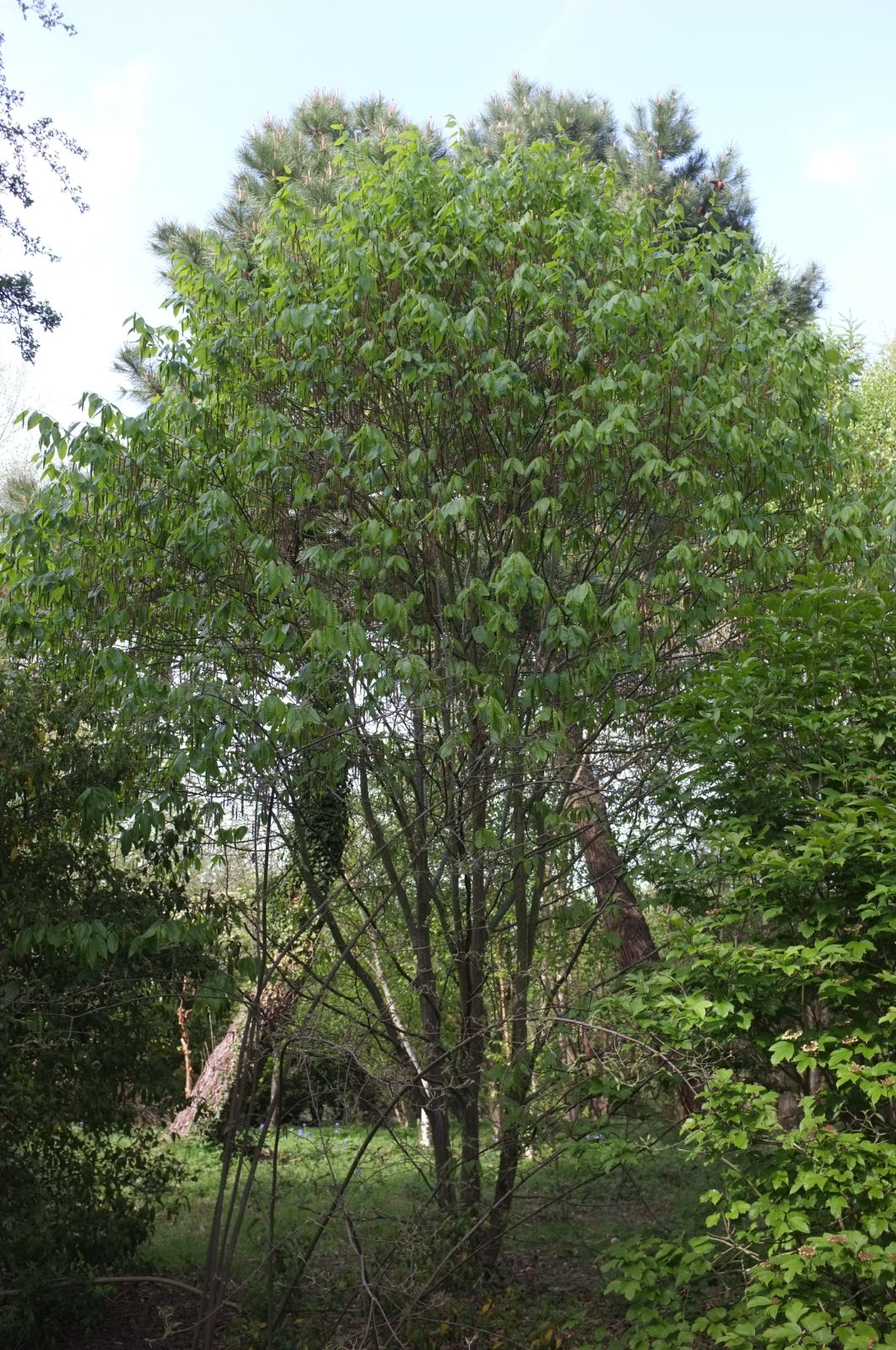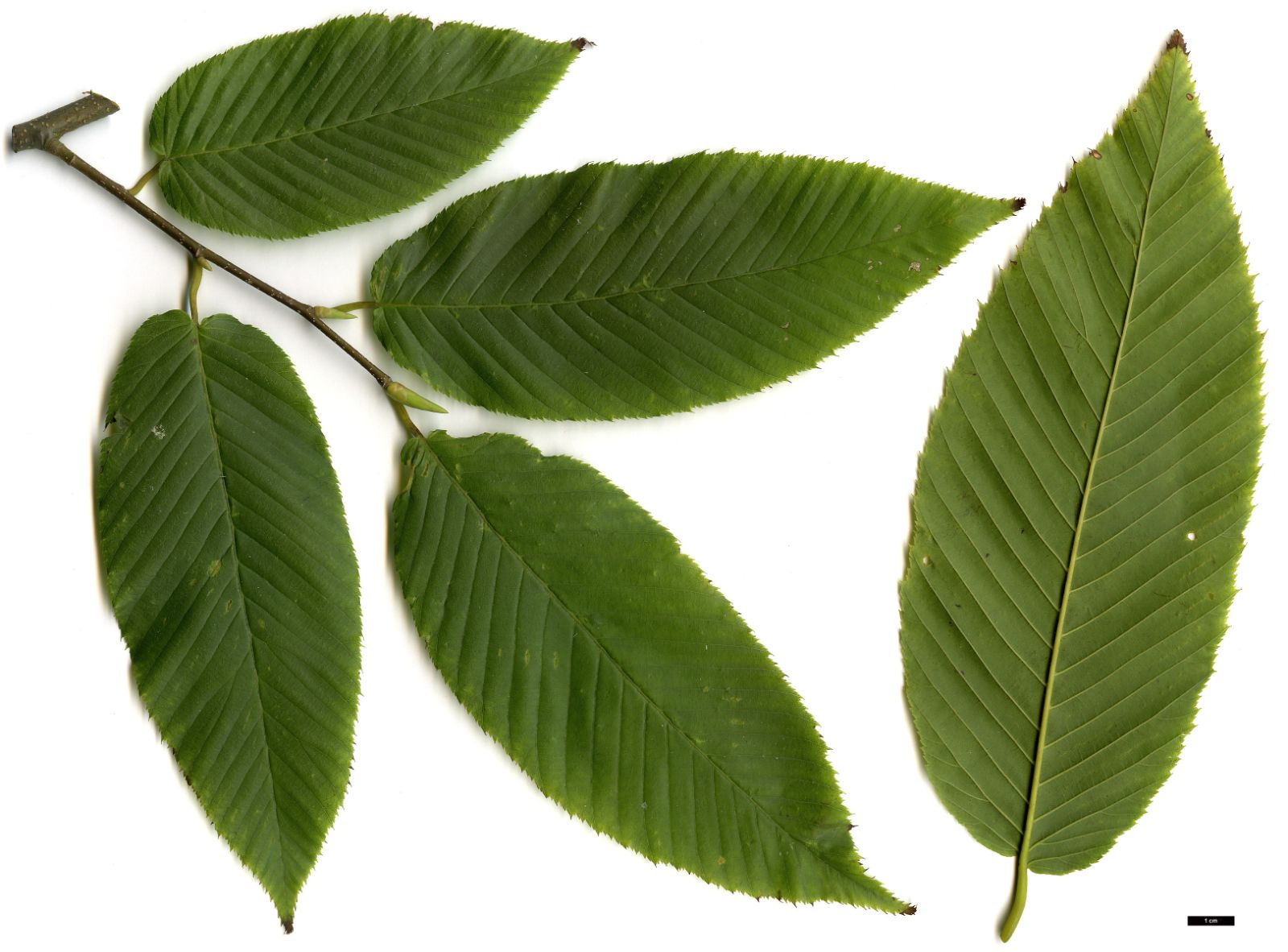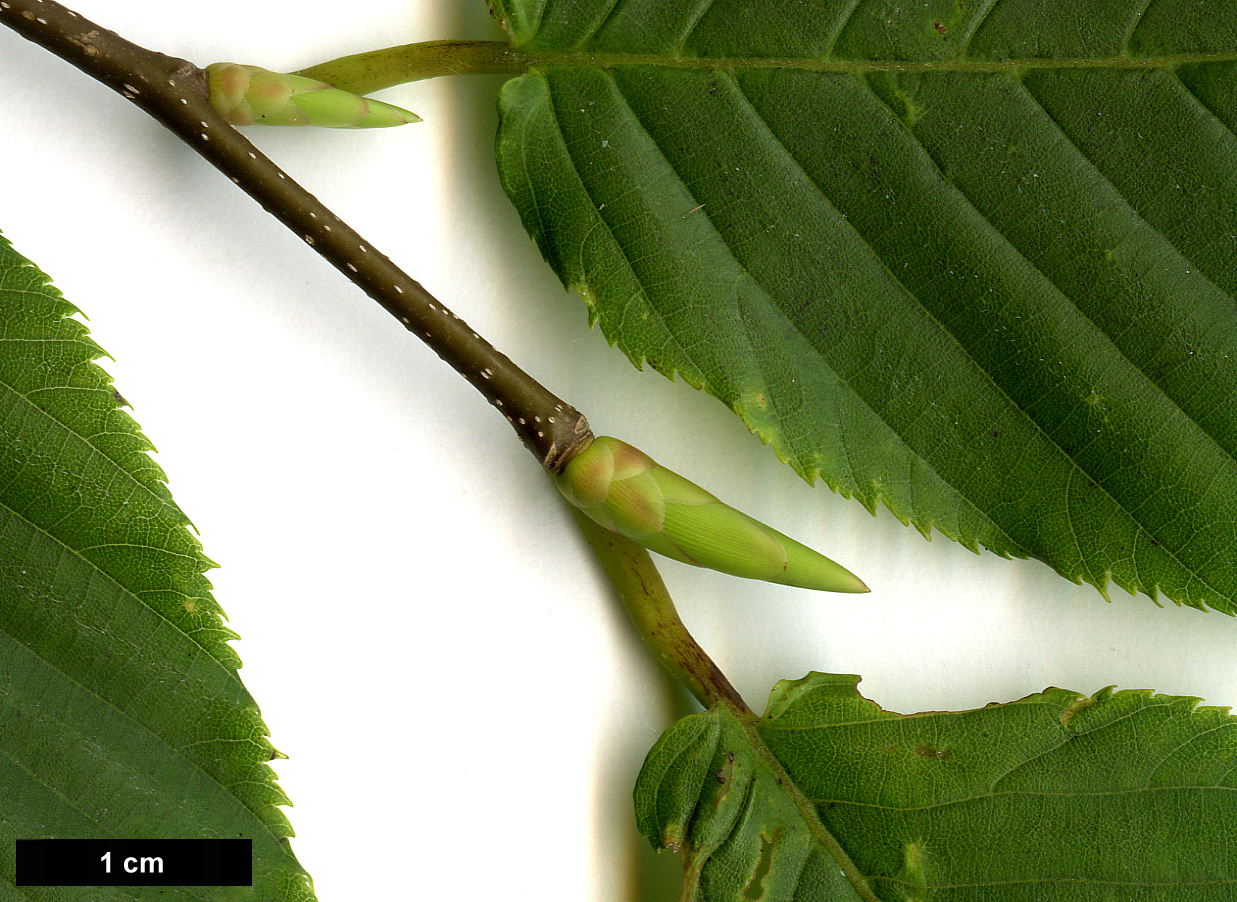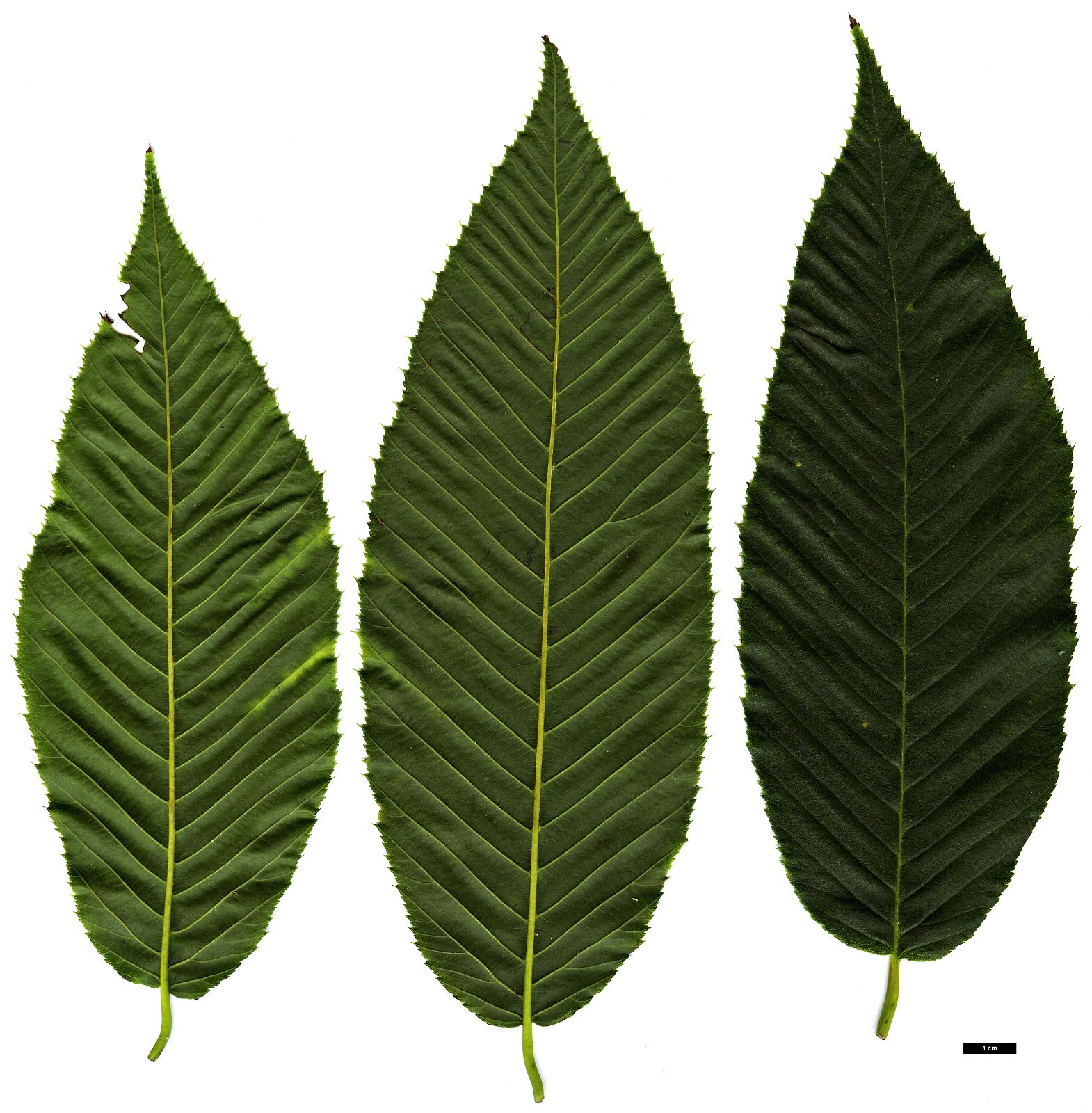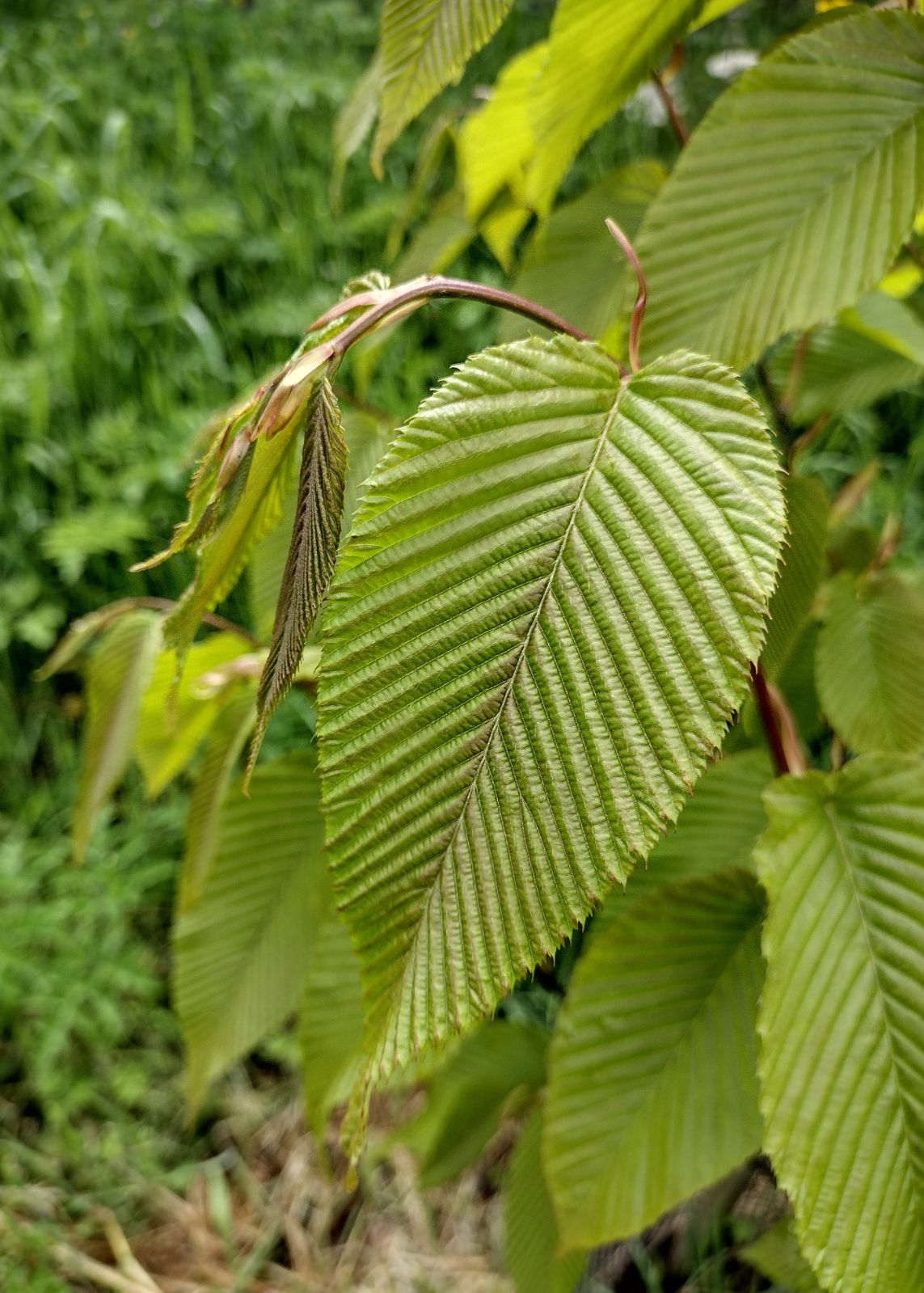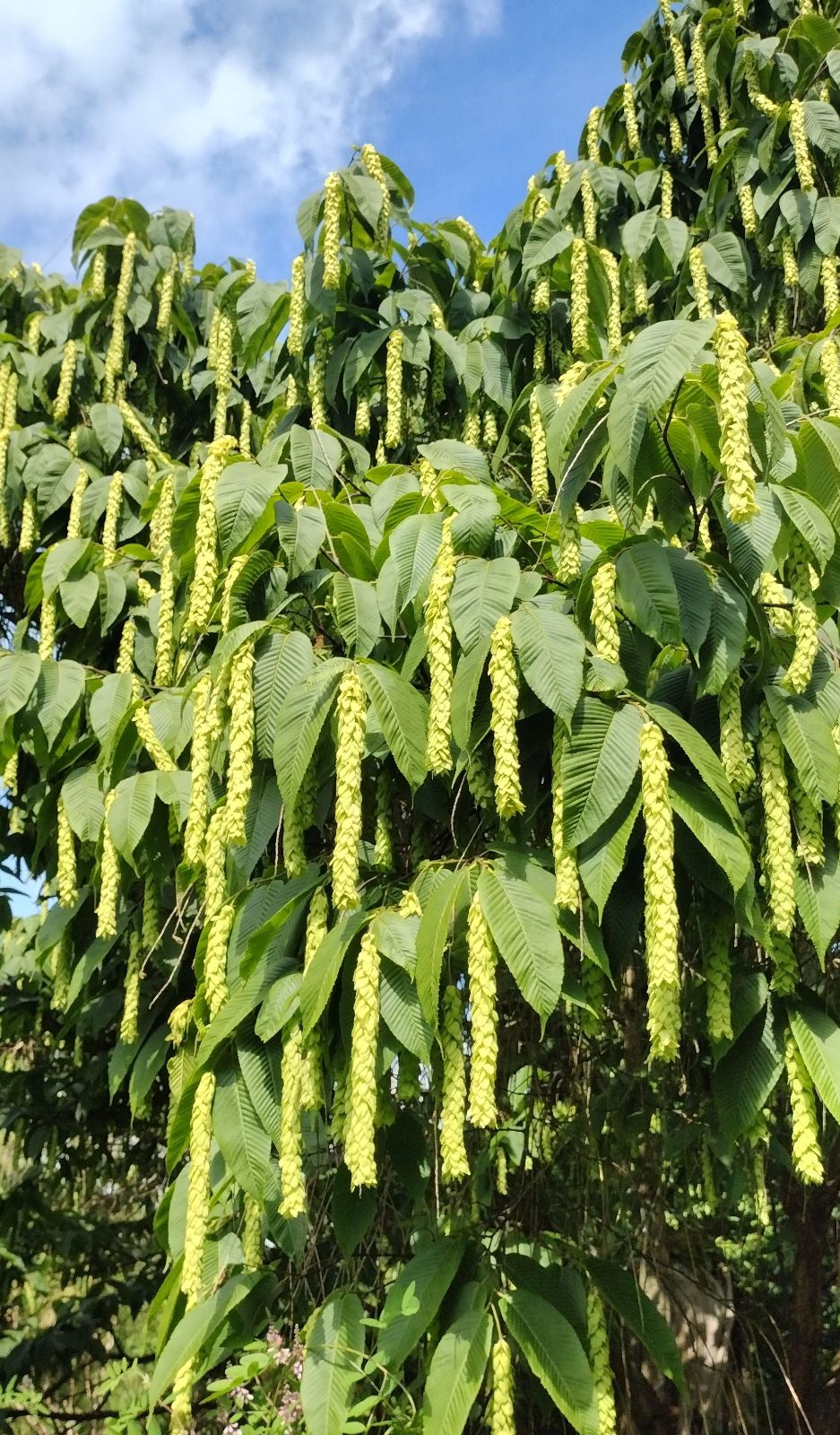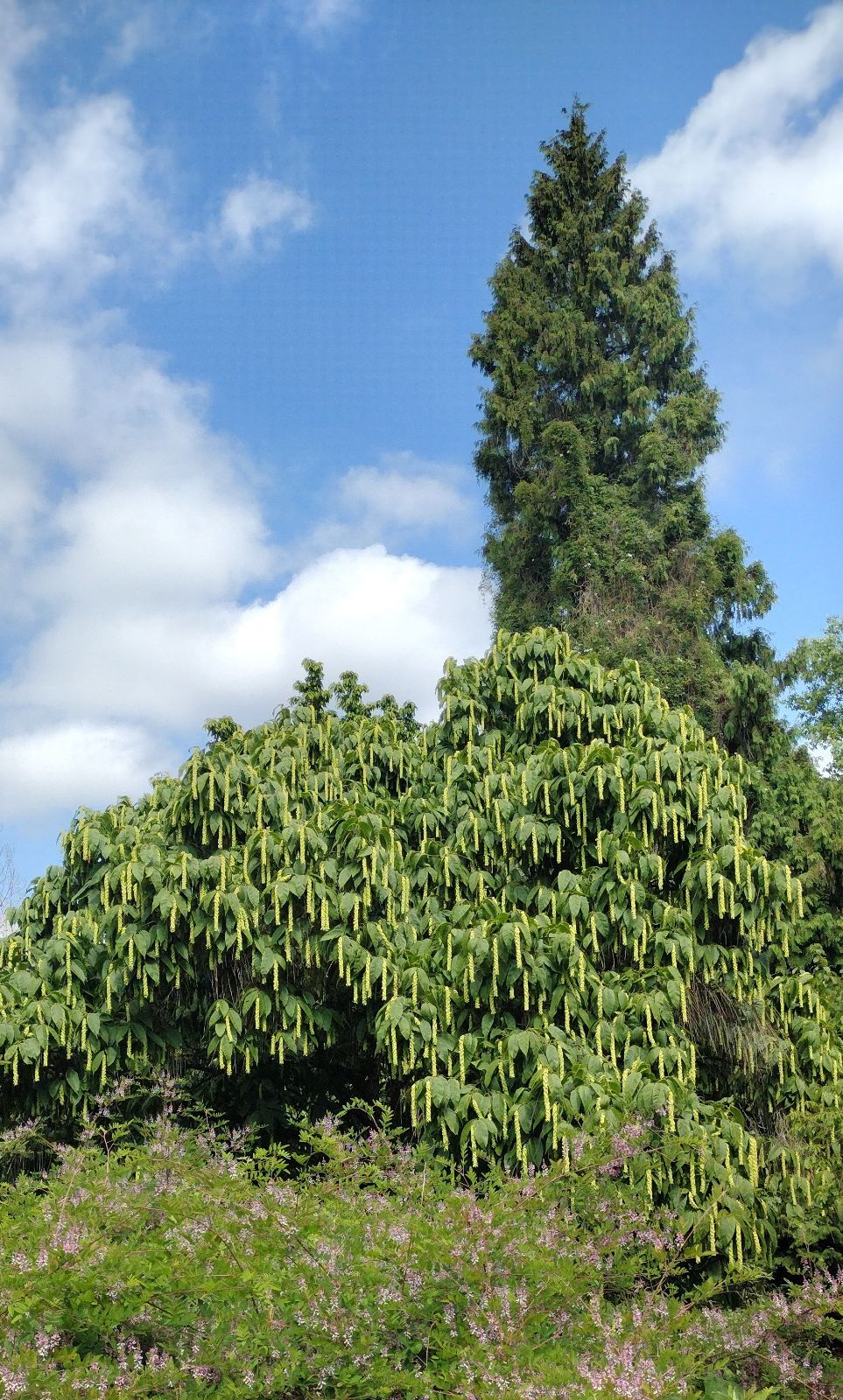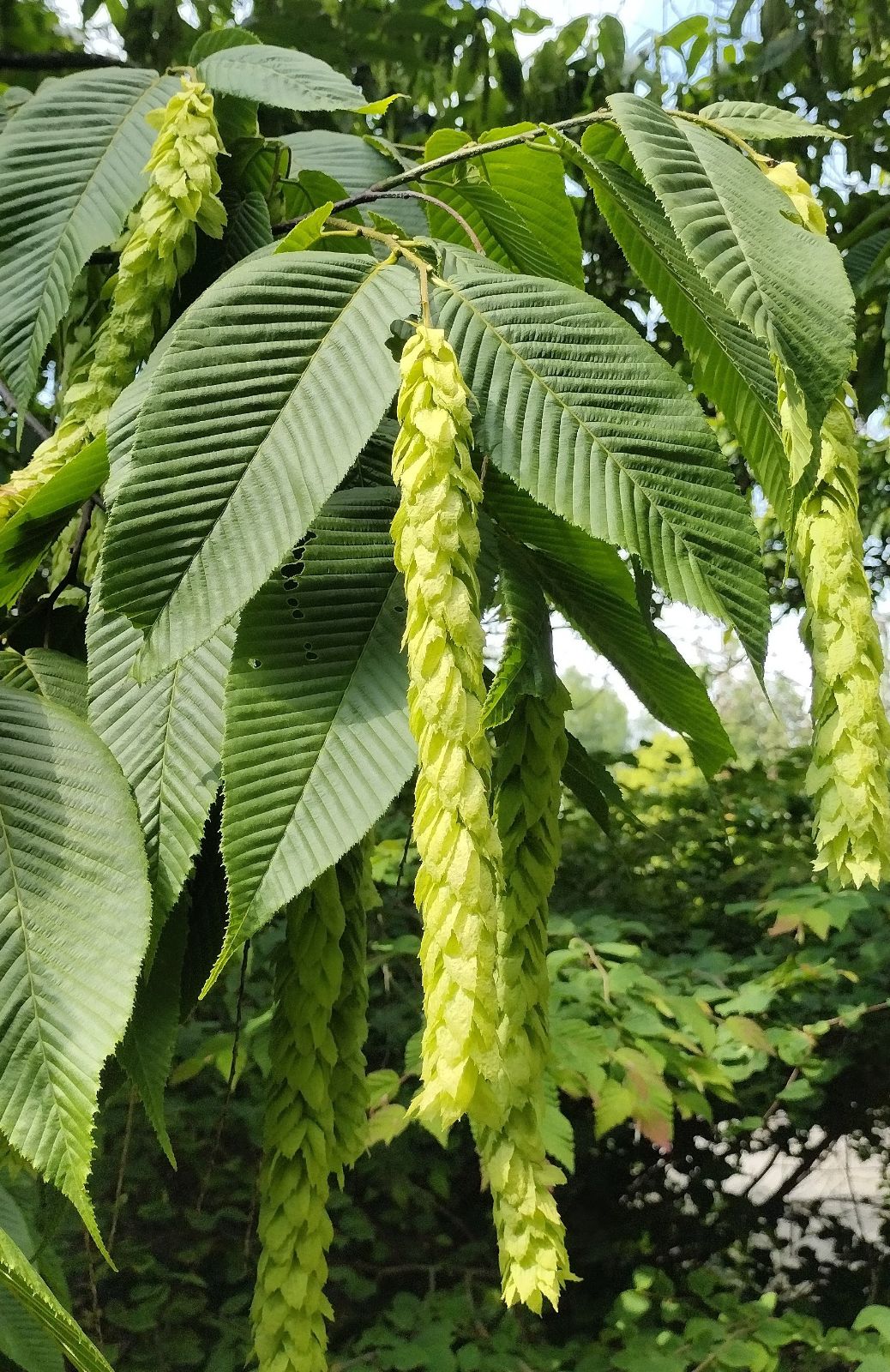Carpinus fangiana
Sponsor
Kindly sponsored by
Lord and Lady Aldington
Credits
Owen Johnson (2022)
Recommended citation
Johnson, O. (2022), 'Carpinus fangiana' from the website Trees and Shrubs Online (treesandshrubsonline.
Infraspecifics
Other taxa in genus
- Carpinus betulus
- Carpinus caroliniana
- Carpinus cordata
- Carpinus faginea
- Carpinus fargesiana
- Carpinus hebestroma
- Carpinus henryana
- Carpinus japonica
- Carpinus kawakamii
- Carpinus laxiflora
- Carpinus londoniana
- Carpinus mollicoma
- Carpinus monbeigiana
- Carpinus omeiensis
- Carpinus orientalis
- Carpinus polyneura
- Carpinus pubescens
- Carpinus rankanensis
- Carpinus × schuschaensis
- Carpinus shensiensis
- Carpinus tropicalis
- Carpinus tschonoskii
- Carpinus turczaninovii
- Carpinus viminea
Tree to 20 m, with a large girth, occasionally bushy. Bark dark grey to brown, smooth, or ultimately fissured and scaly. Shoots purplish brown, soon glabrous; buds long, greenish. Leaves ovate-lanceolate, 6–27 × 3–8 cm; base cordate to rounded; apex acuminate; glabrous except for minor pubescence under the veins and axillary tufts; lateral veins very numerous (in 24–34 pairs) and closely parallel; margin with irregularly double, mucronate serration; petiole glabrous, c. 15 mm long. Male catkins 5–12 cm long, bracts distinct, to 5 mm long; female catkins very long in fruit (45–50 cm) with a 3–5 cm densely pubescent peduncle; fruit-bracts densely overlapping, ripening whitish, 1.8–2.5 × 1–1.2 cm, serrated and folded over the nutlet on both sides. (Rushforth 1986; Li & Skvortsov 1999).
Distribution China Northern Guangxi, Guizhou, north-west Hunan, Sichuan, eastern Yunnan
Habitat Mountain forests, in valleys and on shaded slopes; 900–2000 m asl.
USDA Hardiness Zone 7
RHS Hardiness Rating H5
Conservation status Least concern (LC)
This is one of the east Asian ‘false hornbeams’ in Section Distegocarpus; all four of these species are in cultivation in the west and tend to make more obviously ornamental trees than the ‘true hornbeams’ which have greener, aerodynamically winged bracts to their nutlets. Carpinus fangiana itself might be characterised as the showman of a distinctly introverted genus: it has the largest leaves, flushing bronzy-purple and with the largest numbers of parallel veins, and its fruiting catkins are by far the longest and most eye-catching, earning it the soubriquet of ‘monkey-tail hornbeam’. The strong verticals introduced by these catkins exquisitely complement the precise slanting angle of each leaf’s myriad ribs. Phylogenetic analyses (Dong et al. 2022) confirm that it occupies a distinct position near to the ancestral roots of the genus.
Although Carpinus fangiana is endemic to a relatively small region of central southern China, it is not scarce in the wild (Shaw et al. 2014) and the varying performance of different collections in western gardens suggests that its genome may be quite varied. This desirable tree was missed by Ernest Wilson when he collected on the Emei Shan near the start of the 20th century (Rushforth 1985), and was described in 1929 by H.H. Hu, naming it after Wen-Pei Fang who had been the first botanist to collect a specimen, the previous summer (Fang 1351) (Plants of the World Online 2022; Hu 1929). (Hu originally described two taxa, differing marginally in bract shape; the second was named to honour Wilson (C. wilsoniana Hu) and was described from another of Fang’s 1928 collections (Fang 2685) but this is now considered synonymous with C. fangiana).
By the time Hu described the Monkeytail Hornbeam the flood of new plants out of China had more or less dried up; this tree had to wait until the second great age of plant introductions to make its debut in western gardens. Right at the dawn of this era, in October 1980, Keith Rushforth had collected graft-wood on the Emei Shan – the tree he found had finished fruiting – but these failed to take on stock of the rather distantly related C. betulus (Rushforth 1985). It should always be grafted onto another member of Section Distegocarpus, with C. japonica giving good results as a rootstock. Six years later, two successful introductions from seed were made: SBG 270, from 1100 m in north-western Hunan via the Shanghai Botanic Garden, and Ogisu 91103, from Leibo in south-western Sichuan (Grimshaw & Bayton 2009). Plants from the Shanghai seed have thrived at the David C. Lam Asian Garden of the University of British Columbia in Vancouver, to the extent that this species’ remarkable female catkins were chosen to illustrate the front cover of the 2005 publication The Jade Garden (Wharton, Hine & Justice 2005) in which this hornbeam was much praised. The best example from Ogisu 91103 was planted by Roy Lancaster in his private garden in Hampshire and was 6 m tall by 2021 (Tree Register 2022). Subsequent introductions include SICH 842 from the Erlang Shan in Sichuan in 1991 and MF 97150, made six years later by Maurice Foster. A seedling from the latter collection in Foster’s woodland garden in Kent has formed a slender tree 9 m tall in quite dense shade. A sister-seedling in a more open situation in the adjacent arboretum is a broader 8 m multi-stem; location seems more important than genes in determining whether the species grows as a shapely tree or a leafy bush (Tree Register 2022). Other plantings have failed to thrive, with the single survivor from SICH 842 at the Royal Botanic Gardens, Kew, only reaching 5 m by 2022, and with another scarcely surviving in an open spot on the light sandy soils of the heather garden in the Valley Gardens at Windsor (Tree Register 2022), despite being irrigated through Surrey’s often dry summers. (The superb example of another Chinese ‘false hornbeam’, C. cordata var. chinensis, grows only a few metres away but is in Berkshire; the county border bisects this part of the garden.) Like most hornbeams, C. fangiana probably prefers a higher pH than this garden’s. The example added by the author to his own public park, Alexandra Park in Hastings, has yet to recover from being smothered under garden waste dumped by an adjacent resident, a circumstance not quite equivalent to being planted in the wrong place).
A combination of moderate warmth through the growing season and plenty of rainfall or at least ground-water seems to be this tree’s ideal – but one which is seldom matched anywhere in the UK. The country’s most promising examples so far are all in the south of England, but the species’ absolute hardiness is not yet clear; winters in Vancouver, where the seedlings from SBG 270 have done so well, tend to be a little chillier. The assessment of some sources that it is hardy to USDA hardiness zone 5 (e.g. Oregon State University 2020) is certainly an over-estimate and presumably derives from an assumption that Zone 5 will be the same as Zone 5 in the ‘rival’ system promoted by the Royal Horticultural Society in the UK – but these two scales, most confusingly, run in opposite directions. Wharton, Hine & Justice (2005) give a more conservative estimate of USDA zone 8, amended to 7 here with the benefit of the observations of the intervening years.
Although it cannot be assessed as an easy tree to grow, Carpinus fangiana is so desirable that numbers of specialist nurseries now offer it: by 2022 there were online sources in Ireland, France, the Netherlands, Poland and Canada, as well as at least eight in the UK (Royal Horticultural Society 2022). The plant’s real limits are likely to become clearer as it gets planted more widely, in areas as climatically distinct as the Bartlett Arboretum in South Carolina (Royal Botanic Garden Edinburgh 2022) and Sebright Gardens in Oregon (Oregon State University 2020).
'Wharton's Choice'
One of the seedlings from SBG 270 at the David C. Lam Asian Garden of the University of British Columbia in Vancouver, Canada, growing in full sun near the entrance, has been singled out for special praise and is now propagated under a name that commemorates the garden’s late curator, the Asian plant expert Peter Wharton (Grimshaw & Bayton 2009; University of British Columbia 2022). Scions were added to the Sir Harold Hillier Gardens in England in 2016 and 2018 (Royal Botanic Garden Edinburgh 2022).

